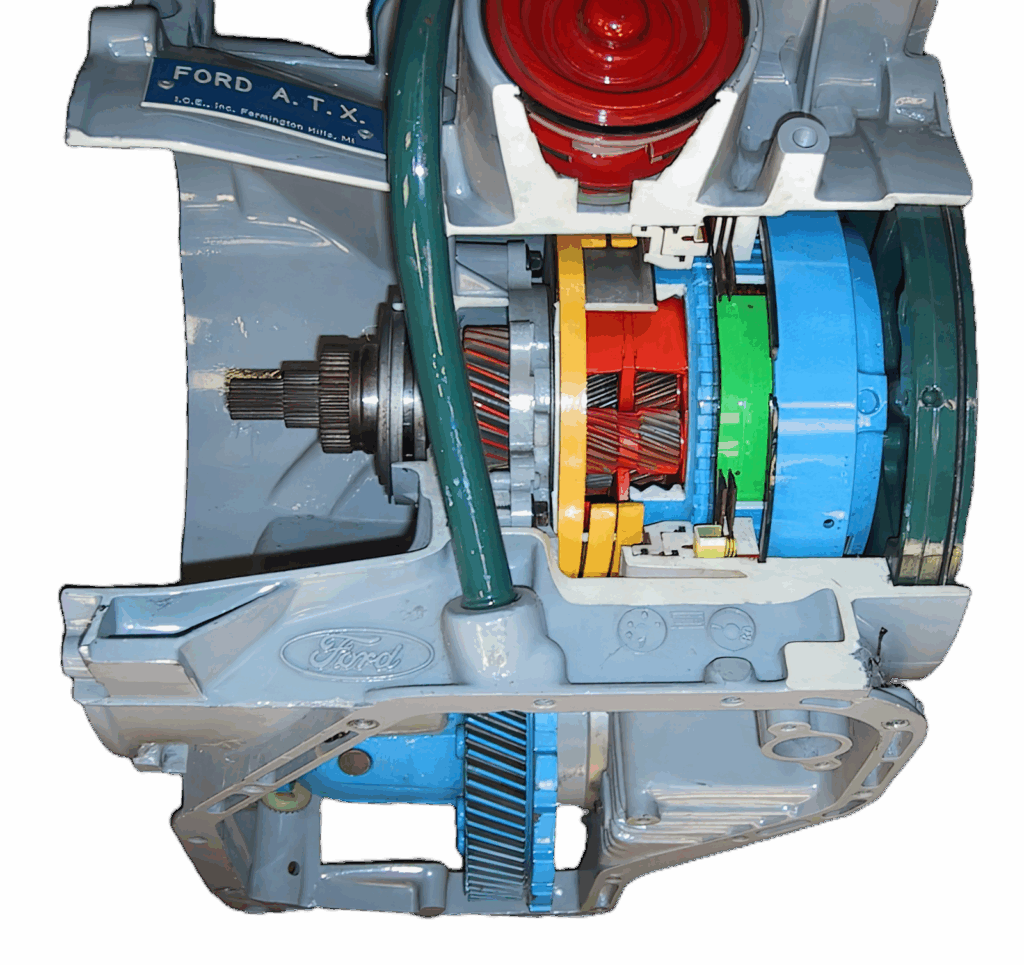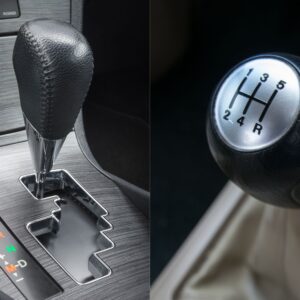Q: What does a car transmission look like?
A: The typical car transmission resembles a church bell. Its rear end is wider than its front end. Because of its tapering shape, the transmission casing is sometimes called a bell casing. Some transmission casings are shaped like boxes.
The transmission transfers power from the engine through the final drive, which includes the differential, and that drives the axles that drive the wheels.
Furthermore, it provides the torque that gets the car moving and then changes the gear ratio between the engine and wheels as the vehicle picks up speed to keep the engine operating at the most fuel efficient and power producing point at all times.

This photo is a cutaway model of a Ford AOD rear-wheel-drive automatic transmission. The torque converter with its internal parts color coded is visible as a cutaway component on the right end of the photo.
Rear-wheel-drive transmissions bolt to the engine and transmit torque through a driveshaft to the final drive in the rear axle.

Torque is transmitted to the transmission input shaft by way of the torque converter on an automatic transmission or transaxle and by the manual clutch and pressure plate on a manual shift transmission.
Manual transmissions require the driver to manually operate the clutch and shift gears. Automatic transmissions do the job for drivers.
Manual transmissions typically have two shafts. On rear-wheel-drive manual transmissions, there’s a main that consists of the input and output shafts (two different parts), and the countershaft or cluster gear that provides the power path for the gears on the mainshaft to transmit torque from the input shaft to the output shaft in every gear except the direct drive gear, which locks the input and output shafts together as one.

The illustration is a diagram of the gears inside a rear-wheel-drive manual transmission and it shows fifth gear powerflow as directed through the cluster gear from the input shaft to the output shaft. Front-wheel-drive manual transaxles work in a similar fashion but usually have three shafts instead of two with the output directly driving the pinion gear that spins the ring gear and differential.
Tips on How to Access the Car Transmission
Before you can access the transmission, you need to know where the part is. Fortunately, it’s usually behind the engine. Of course, the engine’s position changes depending on the car’s powertrain.
You need heavy-duty jacks to raise your car high enough that you can access the transmission from under the vehicle. Furthermore, you need a transmission jack to lower the transmission safely. Move the transmission jack under the raised car, position it below the transmission, and raise the jack. Detach the transmission, allowing it to rest on the jack. Then lower the transmission jack and move it out from under your car so that you can work on the transmission.
Any information provided on this Website is for informational purposes only and is not intended to replace consultation with a professional mechanic. The accuracy and timeliness of the information may change from the time of publication.

































